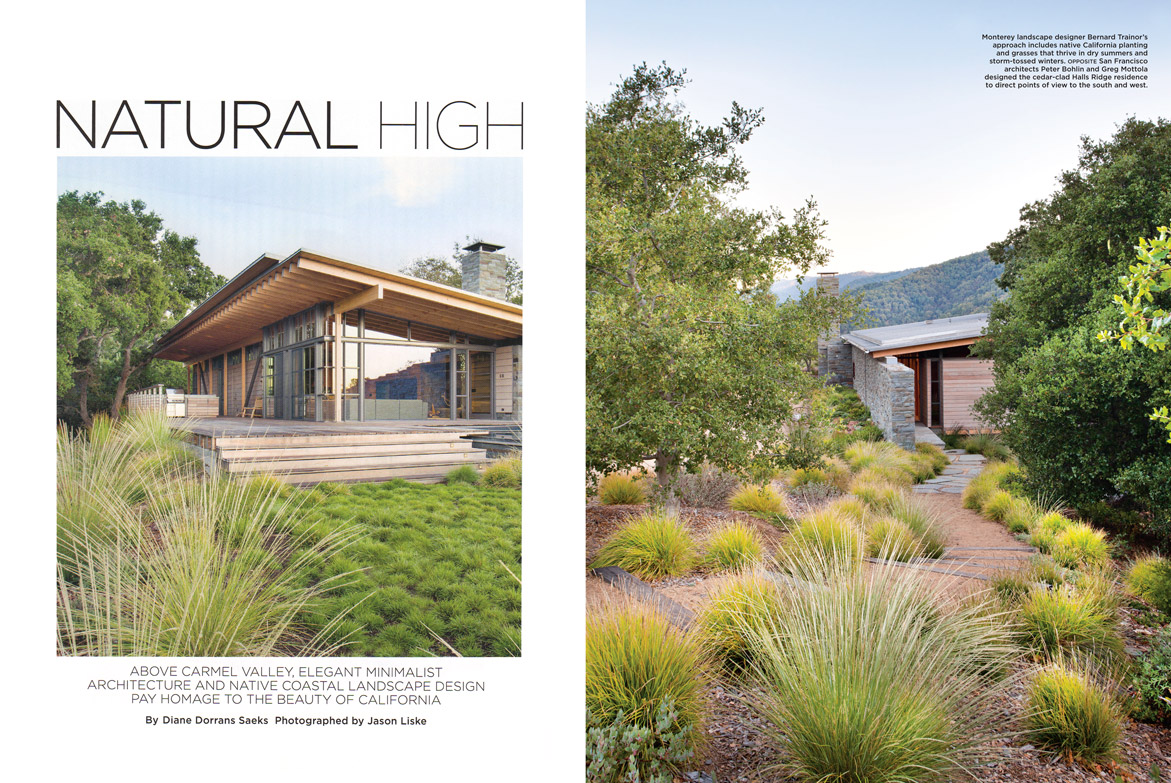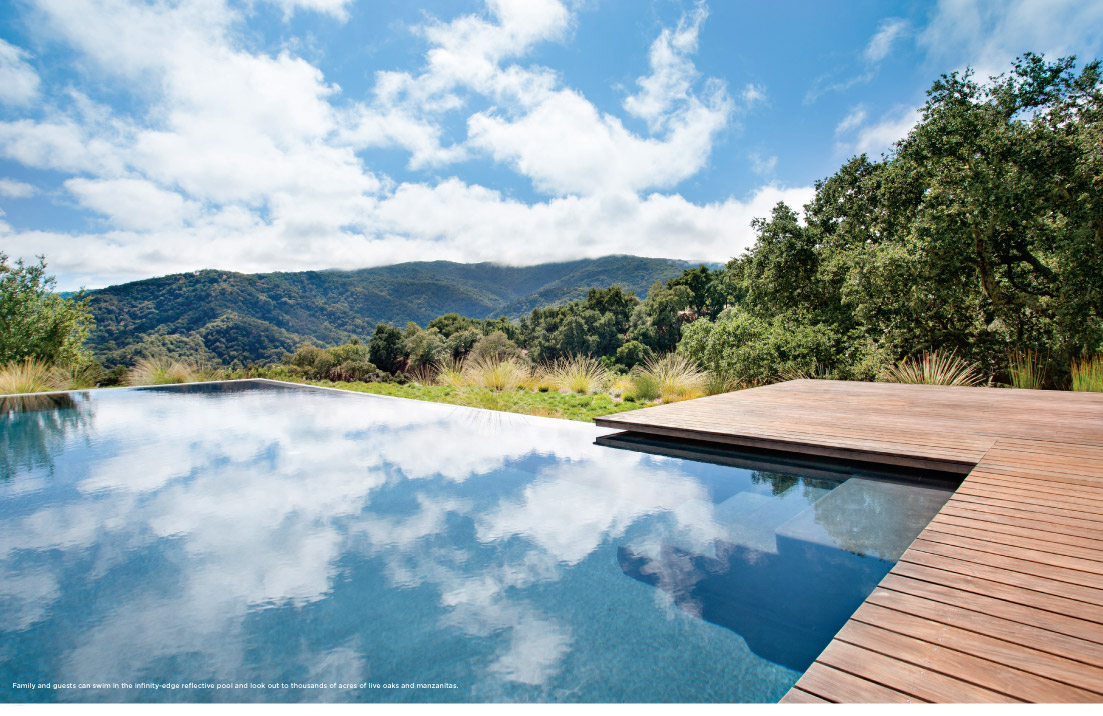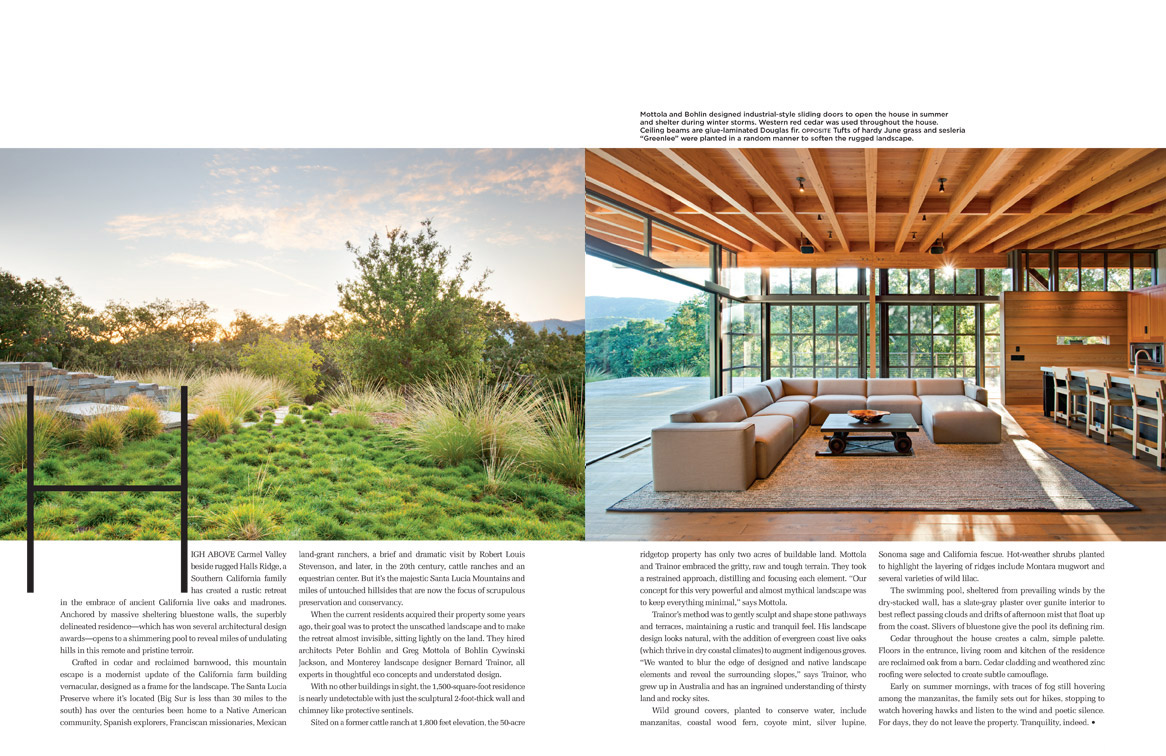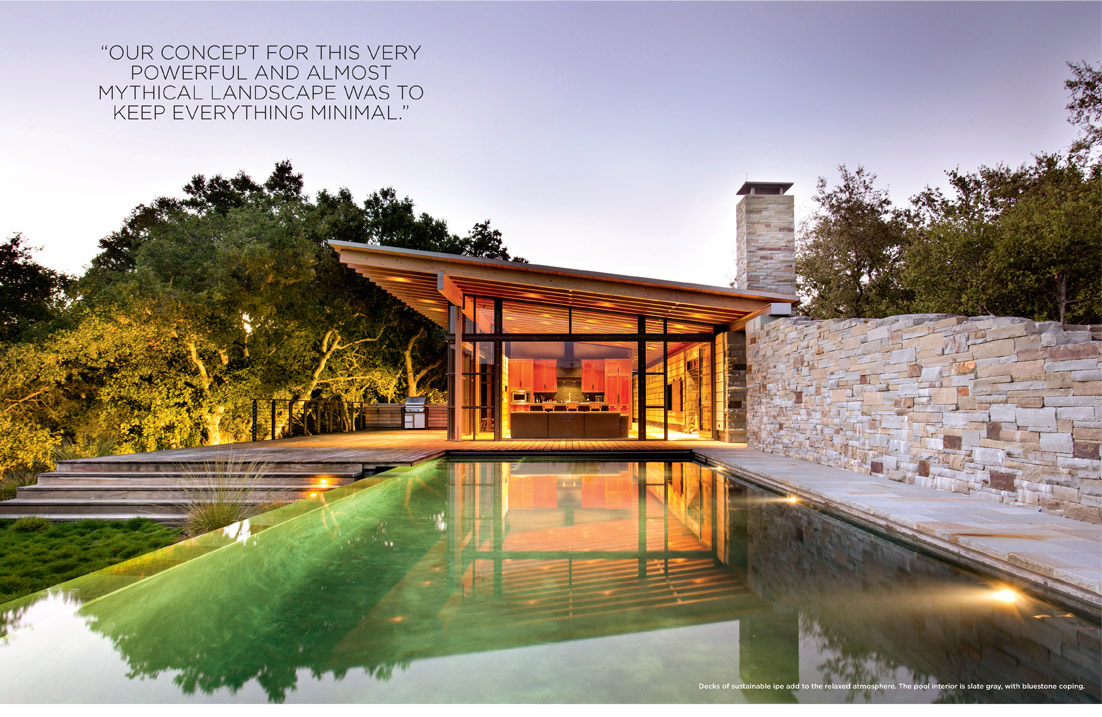Natural High
High above Carmel Valley beside rugged Halls Ridge, a Southern California family has created a rustic retreat in the embrace of ancient California live oaks and madrones. Anchored by massive sheltering bluestone walls, the superbly delineated residence- which has won several architectural design awards- opens to a shimmering pool to reveal miles of undulating hills in this remote and pristine terroir.
Crafted in the cedar and reclaimed barnwood, this mountain escape is a modernist update of the California farm building vernacular, designed as a frame for the landscape. The Santa Lucia Preserve where it’s located (Big Sur is less than 30 miles to the south) has over the centuries been home to a Native America community, Spanish explorers, French missionaries, Mexican land-grant ranchers, a brief and dramatic visit by Robert Louis Stevenson, and later, in the 20th century, cattle ranchers and an equestrian center. But it’s the majestic Santa Lucia Mountains and miles of untouched hillsides that are now the focus of scrupulous preservation and conservancy.
When the current residents acquired their property some years ago, their goal was to protect the unscathed landscape and to make the retreat almost invisible, sitting lightly on the land. They hired architects Peter Bohlin and Greg Mottola or Bohlin Cywinski Jackson, and Monterey landscape designer Bernard Trainor, all experts in thoughtful eco concepts and understated design.
With no other buildings in sight, the 1,500-square-foot residence is nearly undetectable with just the sculptural 2-foot-thick wall and chimney like protective sentinels.
Sited on a former cattle ranch at 1,800 feet elevation, the 50-acre ridgetop property has only two acres of buildable land. Mottola and Trainor embraced the gritty, raw and tough terrain. They took a restrained approach, distilling and focusing each element. “Our concept for this very powerful and almost mythical landscape was to keep everything minimal”, says Mottola.
Trainor’s method was to gently sculpt and shape stone pathways and terraces, maintaining a rustic and tranquil feel. His landscape design looks natural, with the addition of evergreen live oaks (which thrive in dry coastal climates) to augment indigenous groves. “We wanted to blur the edge of designed and native landscape elements and reveal the surrounding slopes,” says Trainor, who grew up in Australia and has an ingrained understanding of thirsty land and rocky sites.
Wild ground covers, planted to conserve water, include Manzanitas, coastal wood fern, coyote mint, silver lupine, Sonoma sage and Calfornia fescue. Hot-weather shrubs planted to highlight the layering of ridges include Montara mugwort and several varieties of wild lilac.
The swimming pool, sheltered from prevailing winds by the dry-stacked wall, has a slate-gray plaster over gunite interior to best reflect passing clouds and drifts of afternoon mist that float up from the coast. Slivers of bluestone give the pool its defining rim.
Cedar throughout the house creates a calm, simple palette. Floors in the entrance, living room and kitchen of the residence are reclaimed oak from a barn. Cedar cladding and weathered zinc roofing were selected to create subtle camouflage.
Early in summer mornings, with traces of fog still hovering among the manzanitas, the family sets out for hikes, stopping to watch hovering hawks and listen to the wind and poetic silence. For days, they do not leave the property. Tranquility, indeed.





